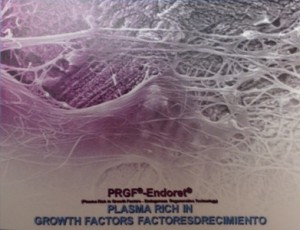 If you have done any research on your own about dental implants and replacing missing teeth, then you know that often times, the jaw bone must be prepared to hold an implant with a mysterious procedure called a “bone graft”. It sounds very scary, and you might find yourself imagining all sorts of scenarios that might explain exactly what bone grafting is. The truth is, dental bone grafting is a very delicate and advanced treatment which is designed to restore both the width and the height of the jaw bone, which may have been lost due to tooth loss, periodontal disease or other disease or trauma.
If you have done any research on your own about dental implants and replacing missing teeth, then you know that often times, the jaw bone must be prepared to hold an implant with a mysterious procedure called a “bone graft”. It sounds very scary, and you might find yourself imagining all sorts of scenarios that might explain exactly what bone grafting is. The truth is, dental bone grafting is a very delicate and advanced treatment which is designed to restore both the width and the height of the jaw bone, which may have been lost due to tooth loss, periodontal disease or other disease or trauma.
Know Your Bone Graft Lingo
There are as many ways to perform a bone graft as there are oral surgeons. There are also hundreds of products available which all promise to deliver an excellent bone graft result. In truth, most bone grafting products are sufficient for use under certain circumstances. When it comes to your jaw bone and the success of your dental implant procedure, it is important that you understand the differences in available treatments so you can make the decision that is best for you.
Advances In Dental Bone Grafting- Platelet Rich Fibrin

Platelet Rich Fibrin in Dental Bone Grafting
For many years, orthopedic surgeons have used platelet rich fibrin (PRF), a substance extracted from a patient’s own blood, to help give the healing process a jump start when performing surgery on bone. PRF stimulates bone growth, soft tissue growth, and promotes healing. Using PRF in oral surgery procedures is a cutting edge, advanced procedure which has proven to drastically impact the success of dental bone grafting procedures. When used in a bone graft, sinus lift procedure or ridge augmentation procedure, growth factors in PRF provide a naturally occurring kick start to the healing process, instantly providing the equivalent of up to 3 days healing time.
PRF can also be used in soft tissue grafting and tooth extraction sockets, including wisdom teeth, to reduce healing time and prevent dry sockets.
Bone grafts performed utilizing this advanced technique demonstrate more predictable results, more successful grafts and faster healing. Ask about PRF (Platelet Rich Fibrin) before you have a bone grafting procedure performed. If your oral surgeon does not utilize PRF in grafting procedures, give Texas Wisdom Teeth and Dental Implants a call.
Using Your Own Bone
The preferred method of bone grafting involves using either a combination of donor bone and your own live bone cells, or just your own bone in the grafting material. Just as in anything else, your own cells are the most effective, reliable, and likely to succeed. The bone used in a graft is most often taken from the back of the jaw (where your wisdom teeth used to be) or the chin. In some cases, where more bone is needed, it can be taken from the hip or knee. The procedure to obtain bone particles for your graft is delicate and obtained without significant trauma using a state of the art instrument called a piezo-electric machine. Using this method reduces trauma to the donor site and provides bone particles in the perfect consistency for dental bone grafting.
Human Donor Bone
Human donor bone is demineralized and sterilized leaving behind an organic scaffold through which your new bone cells will grow. It is most often obtained from human cadavers, but bovine bone can also be used. In minor grafting procedures, human donor bone is often recommended.
Synthetic Bone Grafting Material
Synthetic grafting material is usually composed of a combination of one or more of the following: hydroxyapatite and calcium sulfate. These materials are sometimes used by dentists after tooth extraction to preserve the socket. Synthetic bone is typically not resorbed by the body, and acts as a scaffold for new bone cells to ingrow. Using a synthetic graft prior to a dental implant is not recommended by some oral surgeons.
Bone Grafting Consultation
Doing your own research online is a great way to gather information about a bone grafting procedure. The best way to gather information about your own individual case is to seek the professional consultation of an oral surgeon. Schedule your consultation appointment today, and make sure you claim your certificate for a FREE consultation and panoramic x-ray on our home page.

